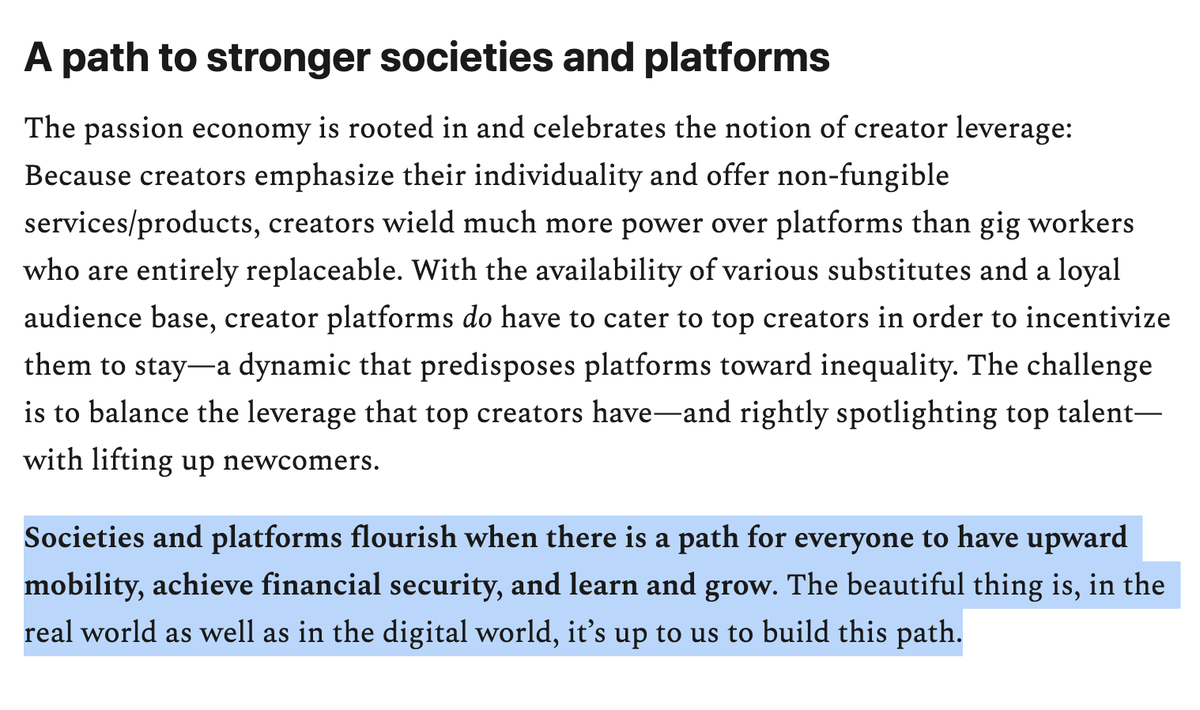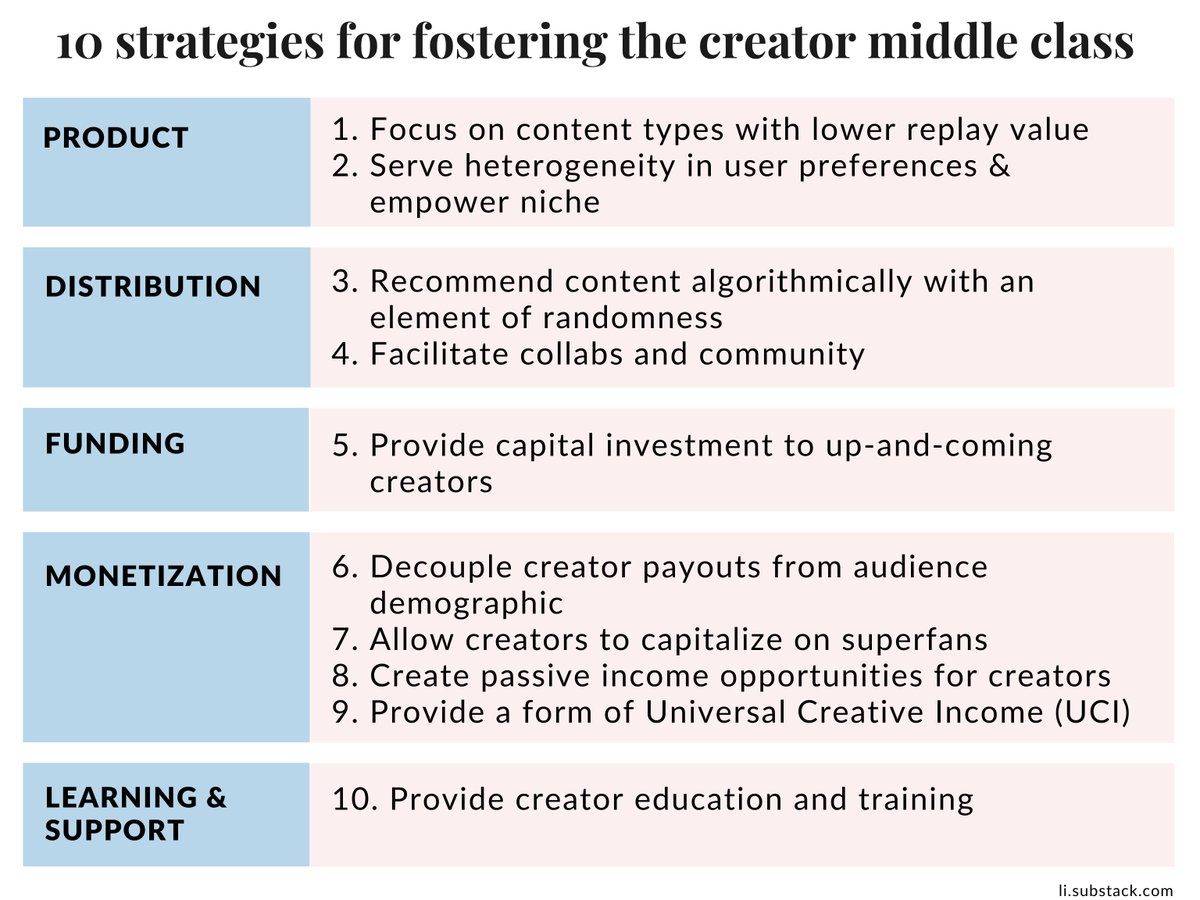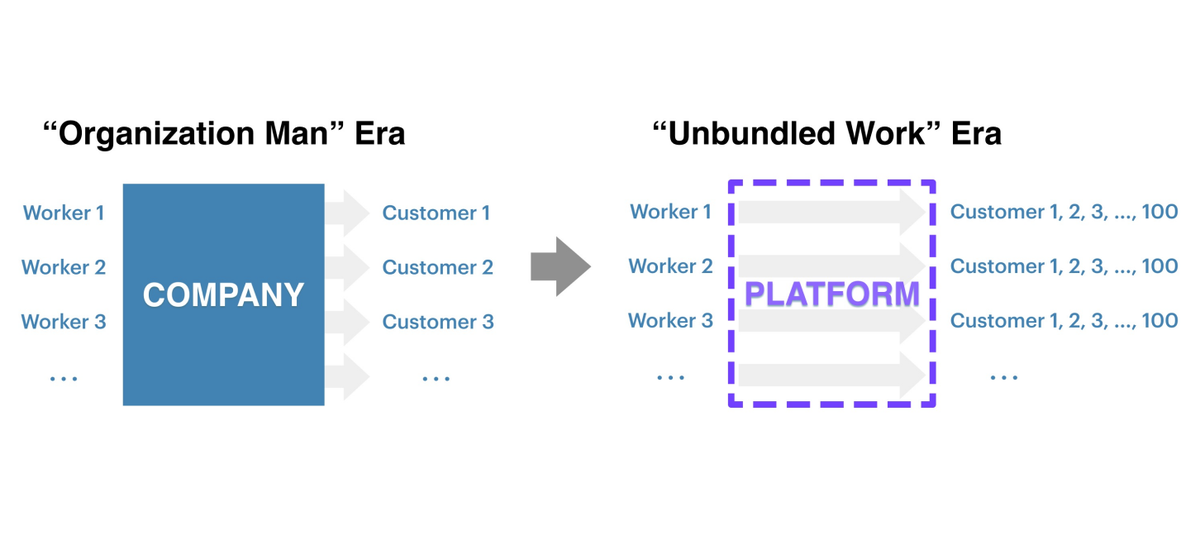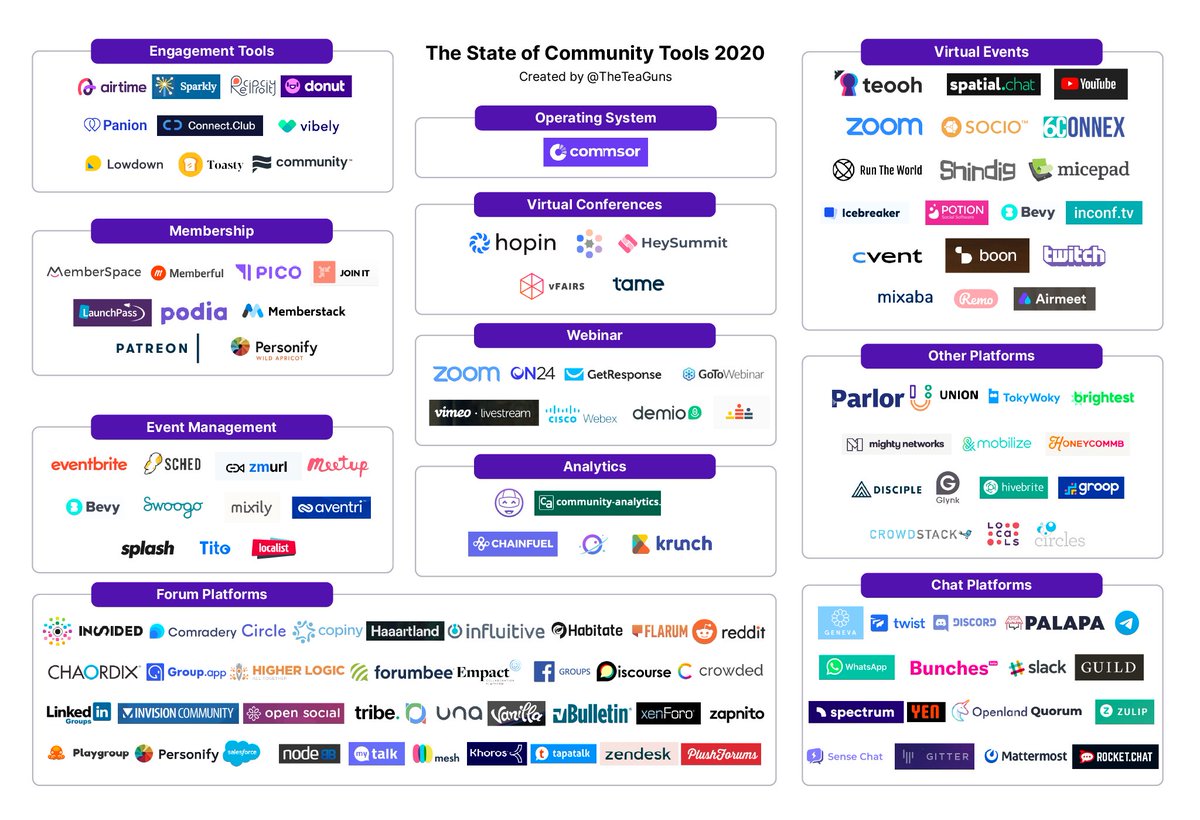
The new American dream is to make a living from one's creativity. 1/3 of kids want to be YouTube stars.
But the inconvenient truth is few creators are actually attaining financial security today.
My new blog is about building the creator middle class 👇
li.substack.com/p/building-the…
But the inconvenient truth is few creators are actually attaining financial security today.
My new blog is about building the creator middle class 👇
li.substack.com/p/building-the…
Today's creator platforms resemble economies in which wealth and attention are concentrated at the top.
On Spotify, artists need 3.5M streams/year to achieve a minimum-wage income of $15K. The top 1.4% of artists pull in 90% of royalties.
rollingstone.com/pro/features/s…
On Spotify, artists need 3.5M streams/year to achieve a minimum-wage income of $15K. The top 1.4% of artists pull in 90% of royalties.
rollingstone.com/pro/features/s…
On Roblox, the top game accounts for 20-25% of concurrent users, and concentration is growing over time.
On Patreon, only 2% of creators made the federal minimum wage of $1,160 per month in 2017.
On Patreon, only 2% of creators made the federal minimum wage of $1,160 per month in 2017.
There are parallels with US history: the strong middle class of the 20th century didn't just happen naturally, but was born of policies that created widespread prosperity.
Similarly, platforms can broaden the path to success—making the American dream not just a dream.
Similarly, platforms can broaden the path to success—making the American dream not just a dream.
Why is creating a middle class of creators important?
Creator platforms flourish when they provide opportunity for anyone to grow and succeed. Less wealth concentration means less risk that a would-be competitor could poach top creators and threaten the entire business.
Creator platforms flourish when they provide opportunity for anyone to grow and succeed. Less wealth concentration means less risk that a would-be competitor could poach top creators and threaten the entire business.
A few examples:
- Facilitate collabs & opportunities for cross-promotion so creators can lift each other type (like Type House)
- Provide capital investment to up-and-coming creators
- Allow creators to monetize superfans to a greater degree, e.g. @BookCameo, @streamloots
- Facilitate collabs & opportunities for cross-promotion so creators can lift each other type (like Type House)
- Provide capital investment to up-and-coming creators
- Allow creators to monetize superfans to a greater degree, e.g. @BookCameo, @streamloots
- Create passive income for creators so they can stack various income sources, what @hunterwalk calls the "multi-SKU creator"
hunterwalk.com/2020/12/01/why…
- Productize creator education and training. Examples from China:
hunterwalk.com/2020/12/01/why…
- Productize creator education and training. Examples from China:
https://twitter.com/ljin18/status/1088501349187182592
Obviously, there are forces pushing us in the opposite direction, too. Top creators have the most leverage and can demand lower take rates (e.g. on Twitch).
And in a world with lots of substitutes for consumers, platforms do have to compete on the basis of their best content.
And in a world with lots of substitutes for consumers, platforms do have to compete on the basis of their best content.
"Societies and platforms flourish when there is a path for everyone to have upward mobility, achieve financial security, and learn and grow. The beautiful thing is, in the real world as well as in the digital world, it’s up to us to build this path." 

This piece was also published in @HarvardBiz today 📚
Choose your own reading experience 🙃 (shoutout to my editor @tom_stackpole!)
hbr.org/2020/12/the-cr…
Choose your own reading experience 🙃 (shoutout to my editor @tom_stackpole!)
hbr.org/2020/12/the-cr…
Related reads:
My piece "100 True Fans" is all about making a living from fewer, truer fans.
It's a riff on @kevin2kelly's classic "1,000 True Fans" kk.org/thetechnium/10…
a16z.com/2020/02/06/100…
My piece "100 True Fans" is all about making a living from fewer, truer fans.
It's a riff on @kevin2kelly's classic "1,000 True Fans" kk.org/thetechnium/10…
a16z.com/2020/02/06/100…
As always, it took a village. Thanks @LilaShroff for research help & riffing on these ideas!
And to those whose thinking and feedback make me smarter: @conradwa, @hankgreen, @blakeir, @patel0phone, @samyamiam, @arampell, @DavidMcDoughnut, @dpteran, @ezracooper, @kushaanahuja.
And to those whose thinking and feedback make me smarter: @conradwa, @hankgreen, @blakeir, @patel0phone, @samyamiam, @arampell, @DavidMcDoughnut, @dpteran, @ezracooper, @kushaanahuja.
The article mentions these companies which are doing cool things that I drew inspiration from. There are countless others!
@tiktok_us @patreon @teachable @gumroad @BookCameo @stir @twitch @loopedlive @SubstackInc @mightynetworks @CircleApp @outschool @beondeck @Kajabi @podfunding
@tiktok_us @patreon @teachable @gumroad @BookCameo @stir @twitch @loopedlive @SubstackInc @mightynetworks @CircleApp @outschool @beondeck @Kajabi @podfunding
• • •
Missing some Tweet in this thread? You can try to
force a refresh





